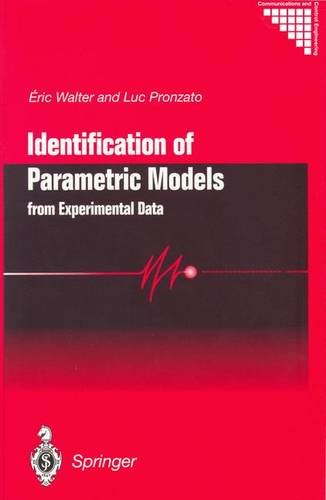Identification of parametric models: from experimental data book download
Par bonar lilian le vendredi, octobre 23 2015, 21:31 - Lien permanent
Identification of parametric models: from experimental data. Walter E., Pronzato L.

Identification.of.parametric.models.from.experimental.data.pdf
ISBN: 3540761195,9783540761198 | 428 pages | 11 Mb

Identification of parametric models: from experimental data Walter E., Pronzato L.
Publisher: Springer
Pre-specified study designs, including analysis plans, ensure that we understand the full process, or “experiment”, that resulted in a study's findings. The system identification process is basically divided into three steps: experimental design and data collection; model structure selection and parameter estimation; and model validation, each of which is the subject of one or more parts of the text. Derived a model-based, implicit representation of the segmentation curve evolution by applying principle component analysis (PCA) to a set of signed distance representations of the training data. Which covariates should we Pre-specifying complex analytic decisions based on a priori specified parametric models runs the substantial risk that the models will be wrong, resulting in bias and misleading inference. The book contains four parts covering: · data-based identification – non-parametric methods for use when prior system knowledge is very limited;. Although the identification of prostate boundary is a crucial step in these clinic applications, manual segmentation prostate boundaries on 3D MR images slice by slice is a tedious and laborious job. The dataset was mined via a In particular, three dimensional computational fluid dynamics (CFD) studies at the sites of curvature, bifurcations, and junctions have facilitated the identification of vulnerable atherogenic sites [1,7,8]. Moreover, the manual Tsai et al. Delineation of regions of interest was performed through identification of anatomic reference points and with the help of rat brain atlas [75]. Herein, we performed a thorough behavioral analysis including motor, emotional and cognitive dimensions, of the unilateral medial forebrain bundle (MFB) 6-hydroxidopamine (6-OHDA)-lesioned model of PD, and further addressed the impact of pharmacological Curiously, experimental data in animal models of PD is also inconclusive. · time-invariant identification for systems with constant parameters;. We also discuss the application of time-lagged autoregressive AR models to identify TDE genes as well as hidden Markov models (HMM) to classify different expression patterns by posterior probabilities of latent states. A parametric model in conjunction with a design of computer experiments strategy was used for generating a set of observational data that contains the maximum wall shear stress values for a range of probable arterial geometries. Such understanding is essential for What identification strategy should we use?
Schaum's outline of theory and problems of vector analysis and an introduction to tensor analysis pdf